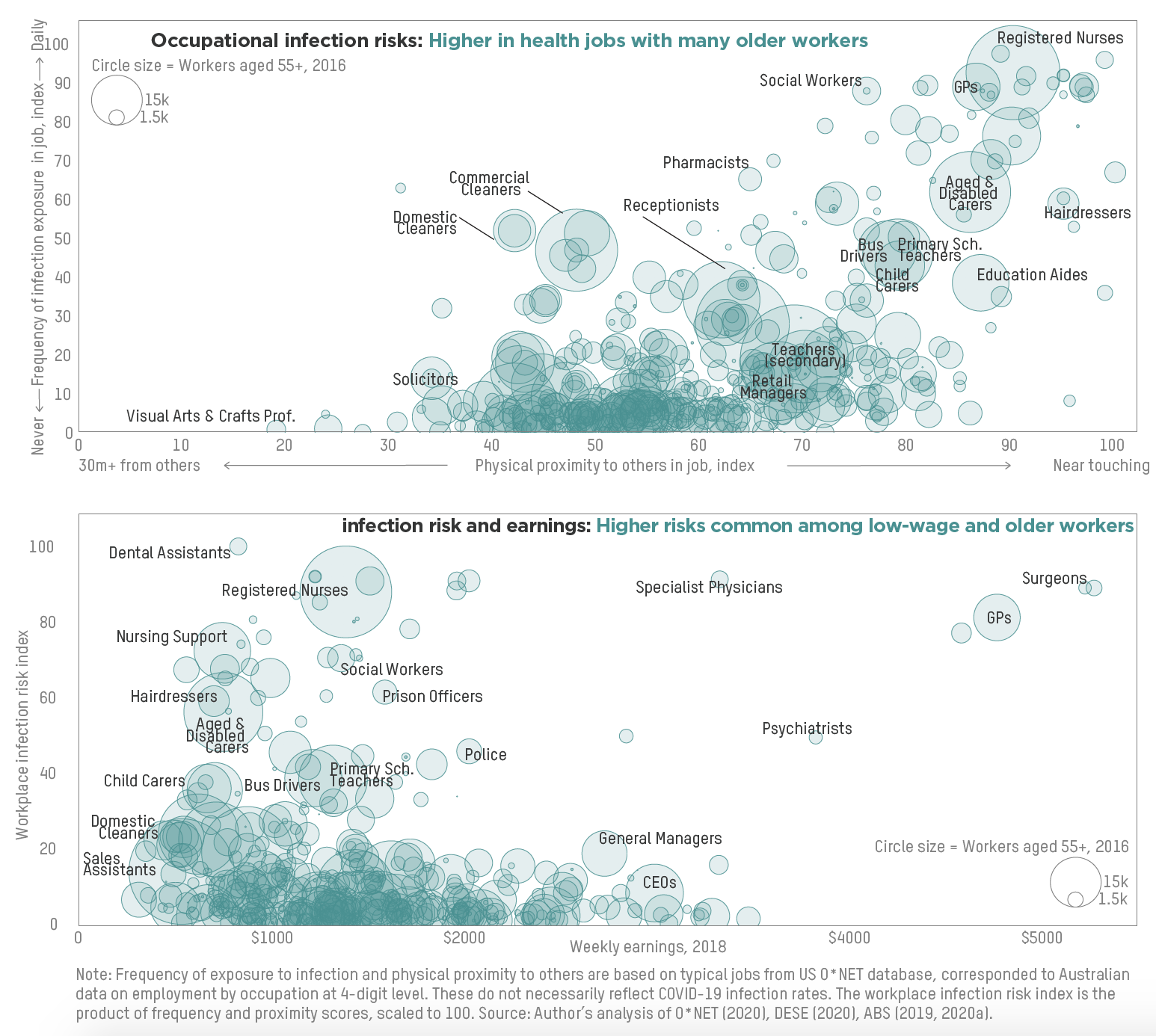
Graphic: Area health risk and age structure: Higher in older areas. CEPAR Fact Sheet on COVID-19 and the demographic distribution of health and economic risks.
A fact sheet on COVID-19 and the demographic distribution of health and economic risks, released by the ARC Centre of Excellence in Population Ageing Research (CEPAR), provides a current snapshot of the risks of workplace infection exposure, morbidity, and job losses across the Australian population, particularly for people aged 55 years and over.
“As restrictions in Australia ease and the economy reopens, there are potential health and economic risks that are multi-dimensional and differ by location, occupation, industry, and age,” said author Rafal Chomik, CEPAR Senior Research Fellow at UNSW Sydney.
The analysis of Australian Bureau of Statistics (ABS) data shows such risks are shared unequally across locations, occupations and industries. But a key driver of differences is age and socioeconomic status.
For example, areas with less healthy populations tend to be either older, poorer, or both.
Occupations with greatest exposure to infection tend to be low wage and are often held by older women.

The analysis also suggests that alongside unemployment impacts there are considerable risks that some people leave the labour force permanently.
“The fact sheet discusses the various policy implications,” said Rafal Chomik.
“For example, while older workers have so far seen lower rates of job loss than younger workers, historic data suggests that they are twice as likely to become inactive after a spell of unemployment. Policy interventions for ways to retain, retrain, and redeploy such mature workers will be required.”
KEY FINDINGS
Health risk by location
Some areas have a higher health risk because their population is older, poorer, or both.
There are higher health risks in regional areas which may require ready deployment of remedial resources when relaxing travel between regions.
Infection risk by occupation
As the economy reopens the infection risk of workplaces will need careful monitoring.
Occupations with higher infection risks present a vulnerability since many are held by older people (who are more likely to have co-morbidities) and/or those on lower incomes and casual contracts (who may be unable and unwilling to take time off in case of infection).
About 70% of hospitality workers, 50% of sales assistants, and 30% of carers report to be on casual contracts. This suggests the potential need for paid pandemic leave (currently unpaid leave is available to casual workers).
Risk of retrenchment and retirement
The analysis of numbers of workers in each age group against current rates of job loss and typical rates of dropping out of the labour force following unemployment suggests that policies will be needed to ensure older people can return to work over the medium term.
Although younger workers have been worst hit, history shows that regaining employment is harder in late age. Older people are more likely to become discouraged and retire following an unemployment spell. Analysis shows about 22% of those aged 55+ were neither looking nor available for work one year after unemployment. For those in their 20s the rate was 7%.
Combined health and workplace infection risks by area
Analysis of health risk and workplace infection risks by area reveals considerable heterogeneity. The health risk depends on the area’s health and age structure. The workplace infection risk depends on an area’s composition of occupations and each occupation’s typical infection exposure (estimated prior to social distancing changes). The centres of major cities appear to have lower risks based on these measures.
Publication
Chomik, R. (2020). COVID-19 and the demographic distribution of health and economic risks. CEPAR Fact Sheet 2020/1.
